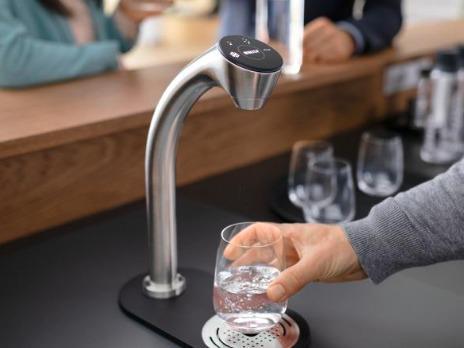The pH scale measures the acidity or alkalinity of a solution. A solution with a pH lower than seven is considered acidic, while a solution with a pH greater than 7 is basic (alkaline). We will explore what exactly is pH and how the change in pH levels can affect our environment and the beautiful species that live within it.

What is pH?
pH stands for potential hydrogen and refers to the hydrogen ion concentration of water. It measures how acidic or alkaline a substance is. The pH scale does this by measuring the electrically charged particles in the substance and is a common measure used in chemistry. The pH scale ranges from 0-14. A solution with a pH of seven is neutral, while anything lower than seven is considered acidic, and a solution with a pH greater than seven is alkaline.

What is the pH of Water?
Pure water has a pH level of 7 and is considered neutral. A pH level below 7 is acidic, and anything above 7 is basic (alkaline). The U.S. Environmental Protection Agency (EPA) recommends our drinking water should be between 6.5 and 8.5.
What Is The Best pH Level For Drinking Water?
The ideal pH level for drinking water sits between 6.5 and 8.5. This range is considered safe, clean, and pleasant-tasting for everyday hydration. Water that's too acidic or too alkaline can affect taste and may indicate it’s not as balanced as it should be. UK tap water generally falls within this range, though the exact pH can vary depending on the local water source.
What’s the pH of Tap Water in the UK?
UK tap water generally falls within this range, though the exact pH can vary depending on the local water source. Though regional variations may occur, most UK households receive water that meets regulatory standards for both safety and taste.
Is Alkaline Water Good For You?
Alkaline water is generally safe to drink as long as its pH stays within a moderate range, typically between 7.5 and 9.5. Water that’s too alkaline (above pH 10) can taste unpleasant and may upset your body’s natural balance. While some claim alkaline water offers health benefits, most experts agree that staying hydrated with clean, balanced water is what really matters for your well-being.

Why is The pH Of Water Important?
Water pH is an important parameter to measure when analysing water and wastewater. If the pH is too high or too low, the water may be corrosive and cause damage to pipes, valves, and other equipment. And the more acidic or basic the solution, the more toxic it is to aquatic life and plants. In fact, most environmental and industrial processes are highly sensitive to pH.
What Affects Water pH?
Factors that influence water pH include natural factors, such as runoff from nearby soil, lake sediment, microbial activity, and volcanic activity; human factors such as industrial pollution and acid rain; and biological influences such as photosynthesis.
What Causes High pH In Water?
In nature, water can become more alkaline if it flows through rocks like limestone, which release minerals such as calcium and magnesium. These minerals raise the pH and give the water a higher alkalinity. This is a natural process and usually doesn’t cause harm to the environment.
What Causes Low pH In Water?
Low pH in natural water often happens when rainwater absorbs carbon dioxide from the air, making it slightly acidic. As it flows through soil and organic matter, it can pick up more acids, especially in forested or peaty areas. This is all part of nature’s cycle and usually doesn’t pose a risk, but very low pH can affect taste and how water interacts with pipes or appliances.
Soil pH
The pH scale can also be used to determine soil acidity. Surface water and groundwater have a natural pH range that varies worldwide and over time. Typically, soil pH measures between 3.5 and 10.
When acidic rainwater falls on the earth, it changes the soil pH and affects plants, animals and fish in lakes and streams. Acid rain is more likely to occur in places with high levels of nitrogen and sulphur compounds released into the atmosphere from cars and industrial processes. These compounds mix with oxygen and water molecules in the air to form nitric acid (HNO3) or sulphuric acid (H2SO4).
How does water pH affect Living Organisms?
Water pH can affect our environment because even a slight change in the level of acidity could lead to the death of many fish and other aquatic organisms and affect all the inhabitants of lakes, rivers, and oceans. An increase or decrease in acid rain forces sea creatures to adapt to new conditions, often by migrating or dying if they are unable to adapt.
Environmentalists have observed that certain types of marine life flourish in highly alkaline waters, and other types of organisms thrive in acidic waters, which balances out. Acidity can also affect nature's watersheds through nutrient runoff, encouraging certain microorganisms to grow dangerously out of control. Acid rain is another well-known threat to organisms as it erodes vital soils needed for animal and plant life.
What Can We Do To Help?
At BRITA, we are committed to changing how people drink water sustainability. Our water dispensers produce 86% less carbon emissions than bottled water. And this can help to keep pH levels stable in the environment. When carbon dioxide is dissolved in water, it lowers the pH of water as hydrogen ions in carbonic acid are released. Read more and discover how we are dedicated to sustainability.
Can a Water Filter Affect pH Levels?
When it comes to drinking water, some water filters, including activated carbon or reverse osmosis systems, can slightly affect the pH of your water. BRITA filters are designed to maintain a balanced pH while removing impurities like chlorine and heavy metals, helping to keep your water fresh and safe to drink. All our water dispensers are fitted with our enhanced filter technology, ensuring your workplace is equipped with great-tasting and sustainable hydration.




